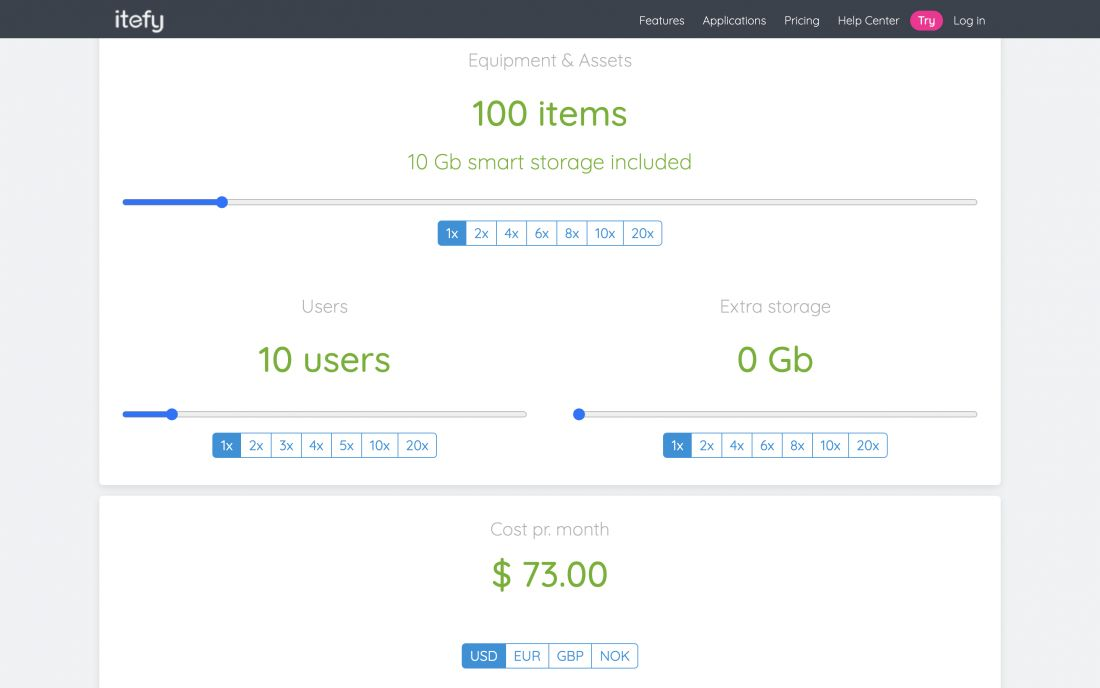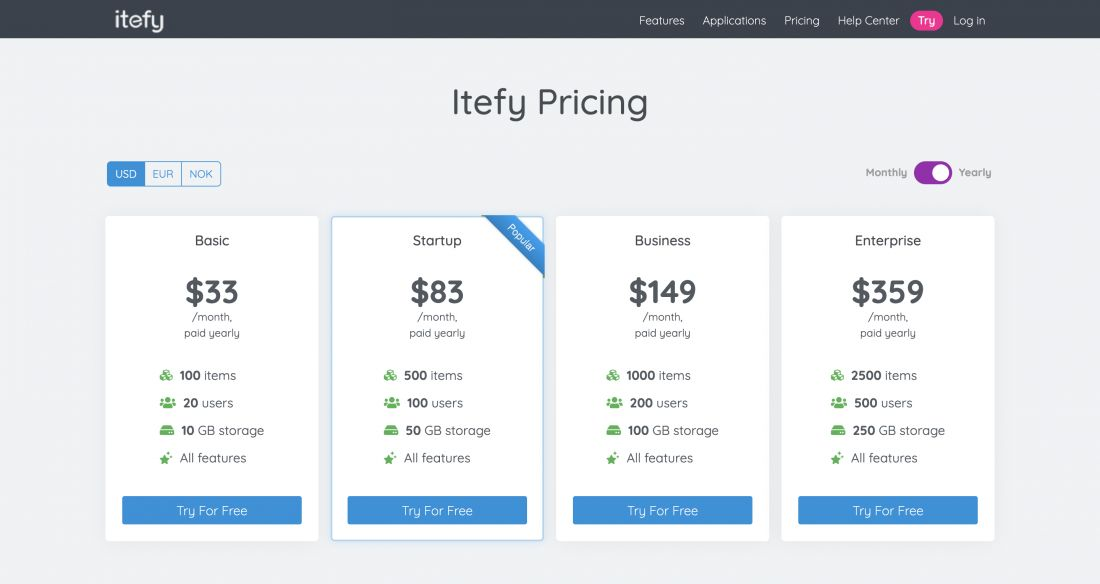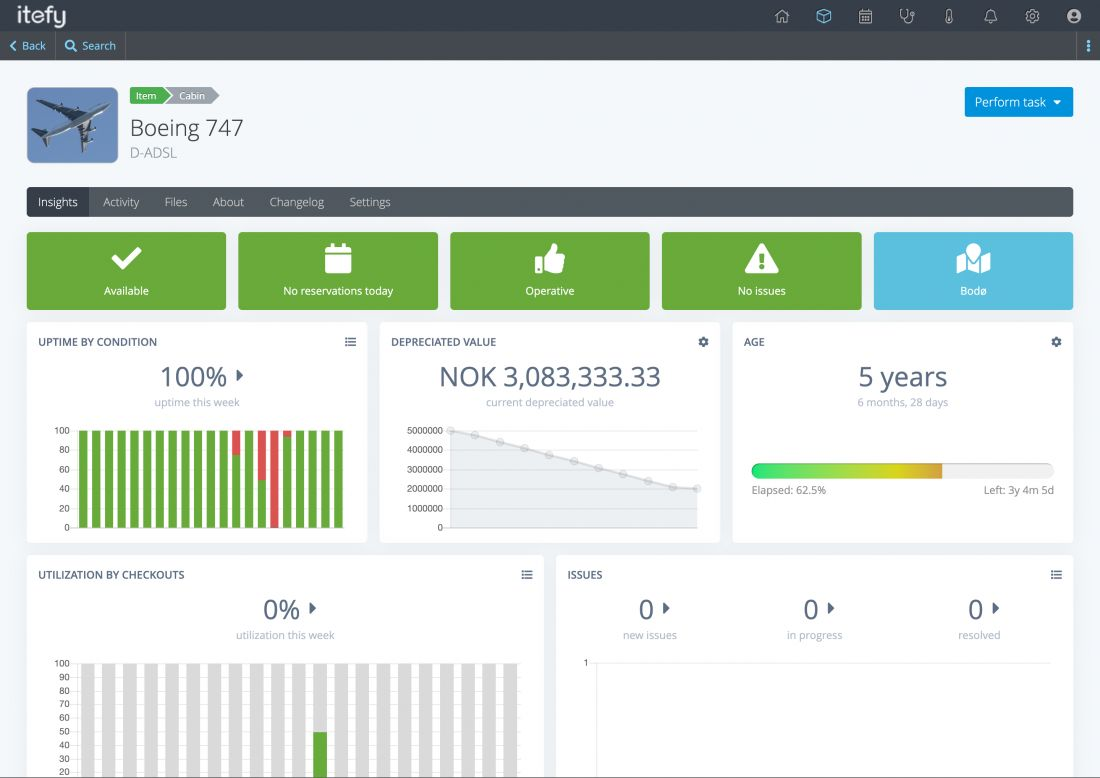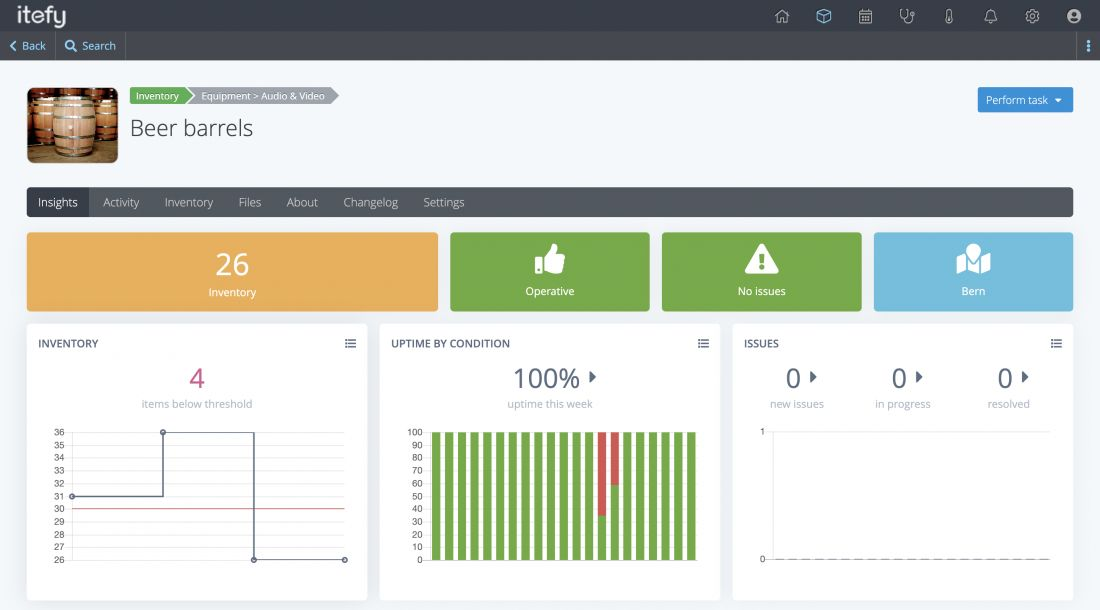We have changed our pricing, and more...
Easier to understand pricing plans, and more resources for the money. And a few new features and improvements.
Although our latest upgrade doesn't seem so big, most of the changes have been done under the hood. The most substantial change has been to the subscription model and has required core changes to the database, a complete rebuild of how Itefy related and communicates with our payment processing partner Stripe, along with the migration of existing customers to the new subscription model (current customers keep the same price and specs unless the subscription is changed).
Easier pricing, more for the money
Ever since the first release of Itefy, we have had a very flexible subscription model, where the customer has been able to select the exact amount of items (down to 10), users, and extra file storage. The philosophy behind it was to give every customer the ability to not pay for more than needed.
Although the intentions were good (and most customers have had no problem with this model), we have got feedback from new or potential customers that the pricing page was hard to understand or difficult to compare to other similar software services (causing unnecessary friction during the evaluation period).
In the spring of 2022, we decided to start the process of changing the subscription pricing model and move away from the very flexible but at the same time complicated model.
The old subscription pricing model:

When planning our new subscription pricing model, we had a few prerequisites:
- It had to be a common model, familiar and easy to understand, which meant going for a common pricing plan model.
- We had to find the balance between not having too many plans, but still making them spacious enough that our customers easily and quickly could determine which plan would fit them.
- Add an option for a yearly subscription interval, with a discount, but still, keep the monthly option.
- Still include all features in all plans
- Increase the number of resources available in each plan, compared to the previous pricing.
This is the pricing page we ended up with:

In short, we created 4 tiers/plans and named them based of business stage or size (Basic, Startup, Business, and Enterprise), with 3 currency options (USD, EUR, and NOK) and an option to select a monthly or yearly subscription interval.
More resources during trial
Up until now, during the free trial, each trial account has been limited to 50 items (assets/equipment/inventory) and 5 users/team members. However, looking at the trial signup data (in addition to feedback), we realized that about 30% of them hit the roof either on the number of items available or the number of users you could add to an account.
Since basically all customers with a paid subscription added (or tried to add) all the resources during the trial, we decided to set the resource thresholds equal to the Business plan (except file storage space).
What's next
The move to a more common, standardized pricing plan subscription model makes it easier to add more options to it. However, the first priority now is just to collect feedback and see how our new subscription plan model works out. If received well, one of the first features we want to add to it is the ability to give out discount coupons.
Improved item page dashboard
In addition to bug fixes and minor improvements, we have also made some substantial changes to the item dashboard. While the old dashboard gave most of the information you needed, it didn't give the quick overview that most customers wanted.
Although we had statistics on uptime, utilization, issues, and such for all the assets combined, this wasn't available for each separate item.
So, with the new item dashboard, we added big, color-coded boxes to give a quick indication of how the asset is doing (usage status, reservation status, condition, issues, and current location).
We added statistics and charts for uptime, depreciated value, age, utilization, and issues. The codebase under the hood is made in a way, that most of the statistics can be utilized of multiple items combined, filtered by criteria such as type, location, custom filters, etc.

Differentiated physical assets and consumable inventory
We have also differentiated items by either physical assets (i.e. equipment) or inventory (i.e. consumables, raw materials, etc.) both for the item pages and when adding items (slightly different information is given).

Thus, an inventory dashboard page looks a little different than a physical asset dashboard page, offering as relevant information as possible based on the main type of item.
